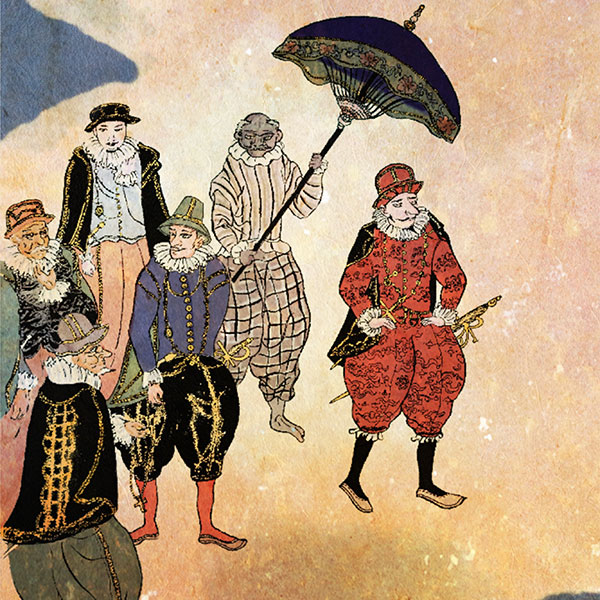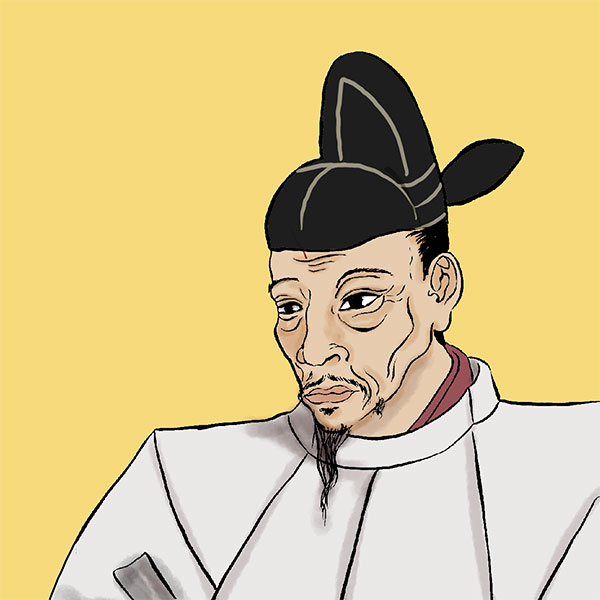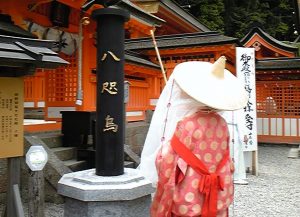Bateren expulsion order (1/2)Hideyoshi's Christian Restriction Order

Bateren expulsion order
- Article category
- case file
- Incident name
- Order to banish Bateren (1587)
- place
- Nagasaki Prefecture
- Related castles, temples and shrines

Hirado Castle
- people involved
Ever since Christianity was introduced in 1549, Japanese Christians, the so-called Christians, have suffered from numerous oppressions. The first major restriction on Christianity in Japan was the ``Bateren Expulsion Order'' issued by Toyotomi Hideyoshi in Kyushu in 1587. Why did Hideyoshi, who until then had tolerated Christianity like Nobunaga Oda, try to ban Christian missionary work and expel missionaries? We will explain the contents in an easy-to-understand manner.
What is the banteran expulsion order?
The "Bateren Expulsion Order" is a document regulating Christianity that was issued on June 19, 1587 in Hakozaki, Chikuzen Province (present-day Higashi Ward, Fukuoka City, Fukuoka Prefecture) by Toyotomi Hideyoshi, a ruler of the time. The word "bateren" is derived from the Portuguese word padre (missionary/priest), and refers to Christian missionaries in Japan.
The person who is said to have written the banishment order for Bateren is Zenmune Seyakuin, a doctor who is one of Hideyoshi's closest aides. The content is a document consisting of five articles, and the original remains in the ``Matsuura Family Documents'' held by the Matsuura Museum (Hirado City, Nagasaki Prefecture), which collects historical materials of the Matsuura clan, which ruled Hirado at the time. In addition, in the Goshuinshi Shokugaku, which was found in the Jingu Archives of Ise Jingu Shrine in 1933, there is a statement written on June 18th that says, ``Bantenrenmonjin no gi, it depends on the person's heart.'' In some cases, the 11 articles of ``Remember'' (Memorandum of June 18) are also included. These two documents have different parts, and various discussions continue to this day.
Why was the banteren expulsion order issued?
To begin with, Christianity in Japan was accepted during the time of Oda Nobunaga. Nobunaga approved of Christian missionary work, and the number of Christians rapidly increased in Kyushu, Kinai, and other areas. This was because the Jesuits, who propagated Christianity, promoted Christianity and trade with South Korea as a set. Toyotomi Hideyoshi, who succeeded Nobunaga and became ruler of Japan, initially accepted Christianity, but the background to this was the Nanban trade.
What caused Hideyoshi to change his mind was the pacification of Kyushu, which he carried out from July 1586 to April the following year. The battle was to defeat Yoshihisa Shimazu of Satsuma Province (Kagoshima Prefecture), who was an enemy of Hideyoshi and aimed to unify Kyushu in order to unify Japan, but Hideyoshi visited Kyushu and discovered that Kyushu was being invaded by Christianity. I was shocked to learn of the current situation. Not only was the number of Christians rapidly increasing, but the Christian feudal lords of Kyushu were donating land to the Society of Jesus. Sumitada Omura, who was the lord of Omura territory in Hizen Province (Saga and Nagasaki prefectures), donated Nagasaki and other areas to the Society of Jesus. Harunobu Arima of the Hinoe Domain in Hizen Province (Shimabara City, Nagasaki Prefecture) also donated Urakami. When the land of Japan became the property of the Society of Jesus, it was like the colonization of Japan by a Christian country.
Furthermore, Christians suppressed other religions by destroying temples and shrines. There were cases in which Christian feudal lords forcibly converted their citizens, and there were also cases in which Christians exported Japanese people overseas as slaves. According to one theory, 50,000 Japanese were exported as slaves. Upon learning of this situation, Hideyoshi must have been surprised and angry.
The trigger for the expulsion order for Bateren? gaspar coelho
The key figure in the banishment order was Gaspar Coelho, a Jesuit missionary from Portugal. Coelho was a representative (junior provincial) of the Society of Jesus in Japan who had an audience with Hideyoshi Toyotomi, received Hideyoshi's permission to preach, and actively intervened in politics. He also offered military assistance to Hideyoshi during the Kyushu conquest.
Furthermore, Coelho guides Hideyoshi, who has arrived at Hakozaki, Chikuzen Province, to a Fusta ship loaded with cannons. While touring Hakata Bay, he showed off Spain's military power by saying, ``I could move the Spanish fleet at any time.'' (*There is also a theory that Hideyoshi boarded the ship without permission). In response to this, Hideyoshi became increasingly wary of the possibility that the Nanban might overrun Japan. Incidentally, Coelho's actions were criticized by contemporary missionaries as hindering missionary work in Japan.
There were other reasons why Hideyoshi issued the banishment order for women: he was afraid of the unity of the Christian daimyo, he feared that the Christians would start a rebellion like the Ikko-ikki group, and Hideyoshi, who was a lecher, tried to get women. There are various theories, such as that Hideyoshi was rejected because he was a Christian, but one of the main reasons is that Hideyoshi feared invasion by Christian countries such as Portugal and Spain.
Furthermore, before the banishment order was issued, Hideyoshi sent a messenger to Coelho to request an explanation of the current situation. Hideyoshi asked Coelho three questions. According to historical documents from the Society of Jesus, Hideyoshi (1) reason for forcing Japanese people to become Christians, (2) reason for missionaries to eat horses and cows as labor, and (3) buying Japanese people to move to Portugal. It seems that he was interrogating her about the reason for taking her with him.
However, Hideyoshi not only questioned the three points, but also made proposals to the Jesuits. Regarding (1), if they do not carry out peaceful missionary work such as Shinto or Buddhism, they will be expelled from Japan, but they will pay for their return.As for (2), they proposed eating wild pigs and deer as an alternative. If the ban on eating horses and cows cannot be observed, they will be asked to leave. As for (3), they demand the return of Japanese who were sold and went overseas, and the release of Japanese who are currently being purchased, and if they are released, they will pay silver.
In response, Coelho ignores the suggestion and gives an excuse-like response. Regarding (2), the missionaries did not actively eat the food and warned Portuguese merchants, but regarding (1), they denied forced conversion and continued missionary activities to various places. Emphasize that. Regarding (3), ``The Portuguese buy Japanese people because the Japanese sell people.We have prevented human trafficking and the descent of the territory's people into slavery, and thanks to that, the damage has been limited to Kyushu.'' There needs to be strict monitoring and a system of prohibition by each daimyo over there,'' he said, suggesting that the Japanese side was also at fault, but giving his answer as if it were someone else's problem. In response, Hideyoshi probably got angry and sent another messenger to ask more questions, but he received the same answer. In response, Hideyoshi issued an order to expel Bateren.
What is the content of the banteren expulsion order?
So, what was the actual content of the Batteren expulsion order? As mentioned earlier, there are two types of materials regarding expulsion orders. First, I would like to take a look at the memorandum in the Goshuinshi Shokugaku written on June 18, the previous day, based on the modern translation.
The article on the expulsion order for Bateren continues.
- people involved

- WriterNaoko Kurimoto(Writer)I am a former travel industry magazine reporter. I have loved history, both Japanese and world history, since I was a child. I usually enjoy visiting temples and shrines, especially shrines, and often do ``pilgrimages to sacred places'' themed around historical figures. My favorite military commander is Ishida Mitsunari, my favorite castle is Kumamoto Castle, and my favorite castle ruins is Hagi Castle. My heart flutters when I see the ruins of battle castles and the stone walls of castle ruins.




